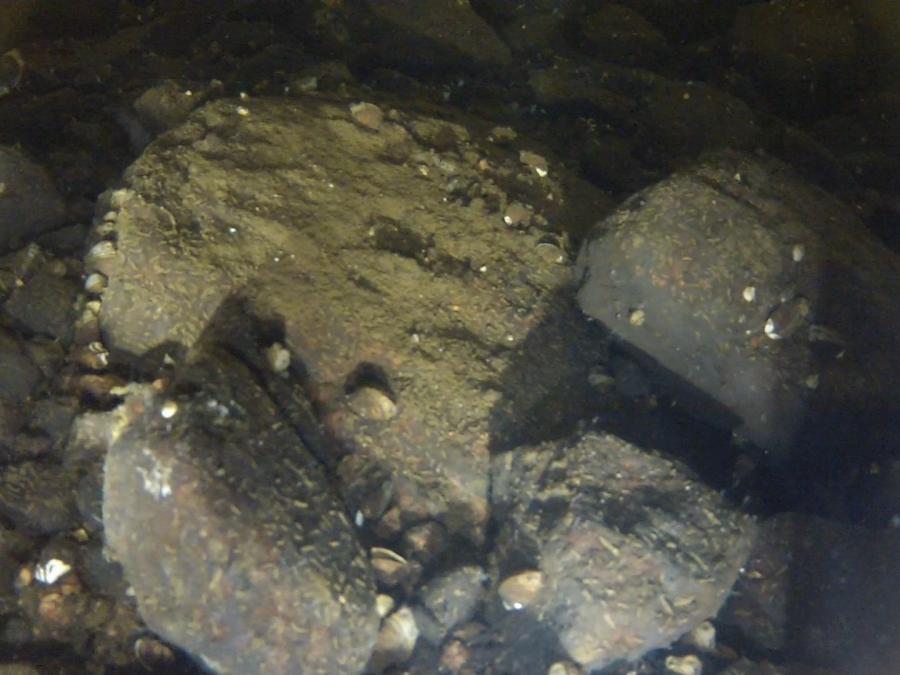Глоссарий (анг)
Some of the interface text in Estonian and Finnish is machine-translated
| Термин на Английском | Термин на Русском | Термин на Эстонском | Термин на Финском | Значение | Фото |
|---|---|---|---|---|---|
| Blooming of water | Цветение вод | Veeõitseng | Leväkukinta | (Russian Federation GOST 17.1.1.01-77) Mass development of phytoplankton, that caused changes in water colour. |
|
| Blue-green algae | Сине-зеленые водоросли, цианобактерии | Sinivetikad (tsüanobakterid) | Syanobakteeri, sinibakteeri, sinilevä | (Cyanobacteria/Cyanophyta) Are photosynthetic prokaryotes containing chlorophyll and a blue pigment. |
|
| Bottom sample (Quantitative) | Донная проба | Põhjaproov (kvantitatiivne) | Pohjanäyte | (1) An amount of sediment (with all organisms in it) collected from the bottom of water body by means of bottom sampler with known grab area. It is used for different types of investigations of benthic living organisms (species composition, each species population demographic structure, total and specific biomass and abundance). Remarks: (a) The data collected from these investigations are normally recalculated to 1 square meter. Concerning the scope of TOPCONS project they will be used for spatial extrapolations related to key species and assemblages and then landscape modeling and estimation of ecological sensitivity; (b) this is a spot sample - taken for one place and consisting of one above mentioned volume of sediment or composite sample – consists from several volumes of sediments taken from several places situated closely to each other, but within the same biotope; (2) Sample can be collected by scuba diver with use of a frame of known area. In this case the sample contains all organisms and substracted the within the area delineated by a frame. Remark a is the same as above. |
|
| Boulder | Валун | Rahn | Lohkare | A detached rock mass larger than stone, having a diameter greater than 600 mm (FIN), 512 mm (EST) or 100 mm (RUS) , being somewhat rounded or otherwise distinctively shaped by abrasion in the course of transport; the largest rock-fragment size recognized by sedimentologists. |

|
| Brackish water (subsaline) | Солоноватые воды | Riimvesi | Murtovesi | Water containing more salt than freshwater, but less than sea water. Forms by mixing of sea water with fresh water, e.g. estuaries (Gulf of Finland in the Baltic Sea). Technically brackish water contains from 0.5 to 30 grams of salt per litre |
|
| Breeding success | Успешность размножения | Sigimisedukus, reproduktiivne edu | Lisääntymismenestys | The ratio between, e.g., the number of eggs laid by a bird and the number of chicks leaving the nest. |
|
| Brown algae (Phaeophyta) | Бурые водоросли (Phaeophyta) | Pruunvetikad | Ruskolevät | Members of the class Phaeophyceae (division Chromophyta), comprising about 1,500 species, common in cold waters along continental coasts. Freshwater species are rare. Species color varies from dark brown to olive green, depending upon the proportion of brown pigment (fucoxanthin) to green pigment (chlorophyll). Source: http://global.britannica.com/EBchecked/topic/81647/brown-algae |
|
| Browsers | Соскребатели | Kraapijad | Laiduntajat | Organisms that feed by scraping thin layers of living organisms from the surface of the substratum (eg., periwinkles feeding on rock-surface diatom films; urchins scraping a thin, filmy sponge colony from a rock). |
|
| Bryophytes | Мохообразные растения | Sammaltaimed | Sammalet | Collective term for mosses, liverworths and hornworths. Bryophytes are land plants that do not have vascular tissue. They reproduce via spores. |
|
| Cape | Мыс | Neem | Niemi | Small part of land shooting out in sea. |
